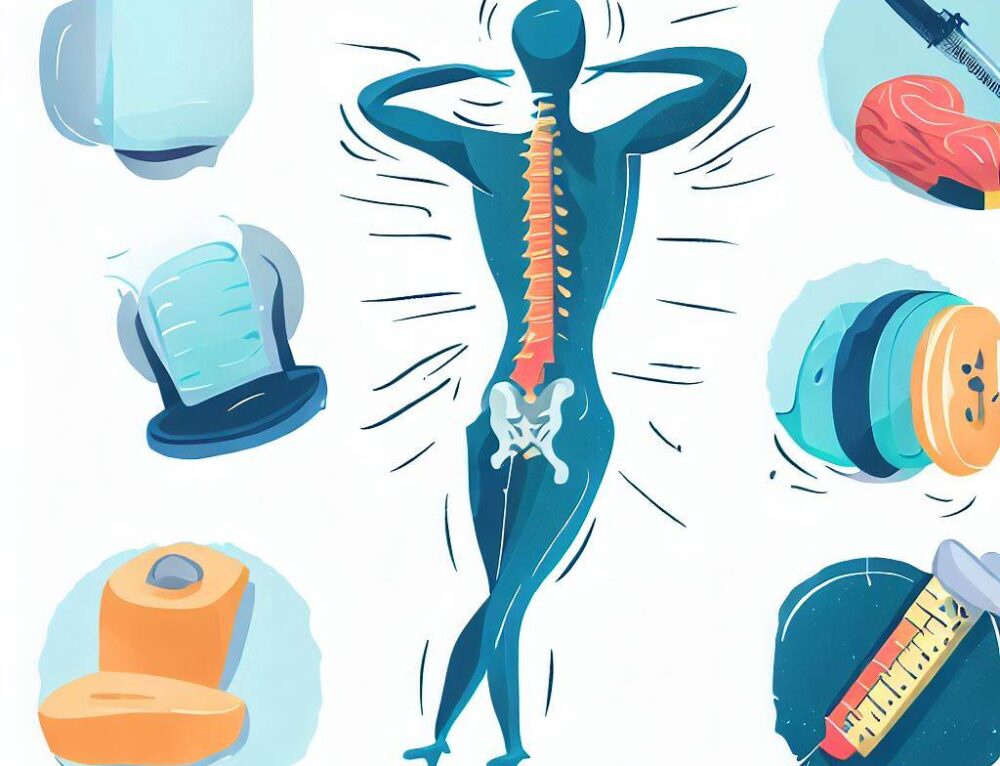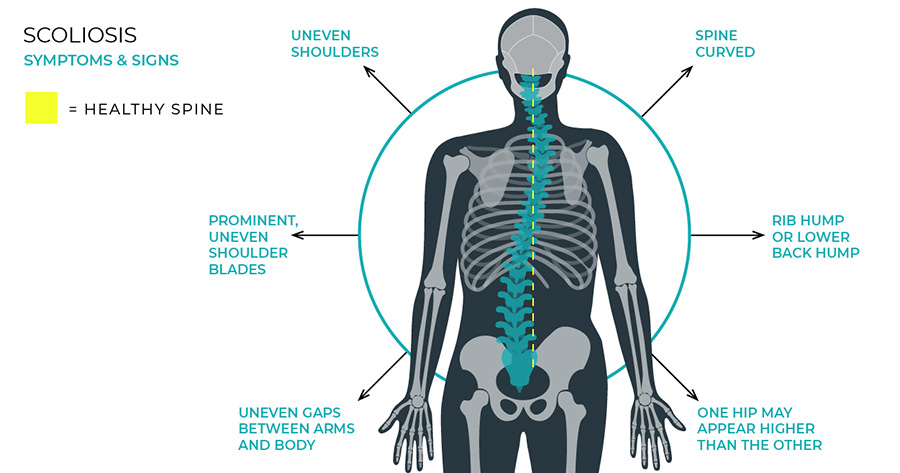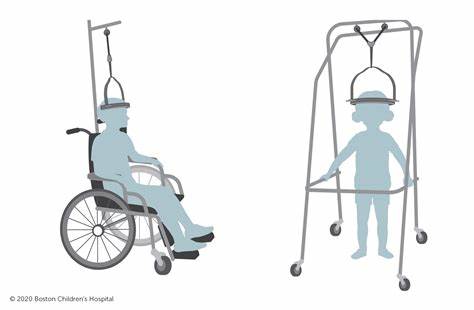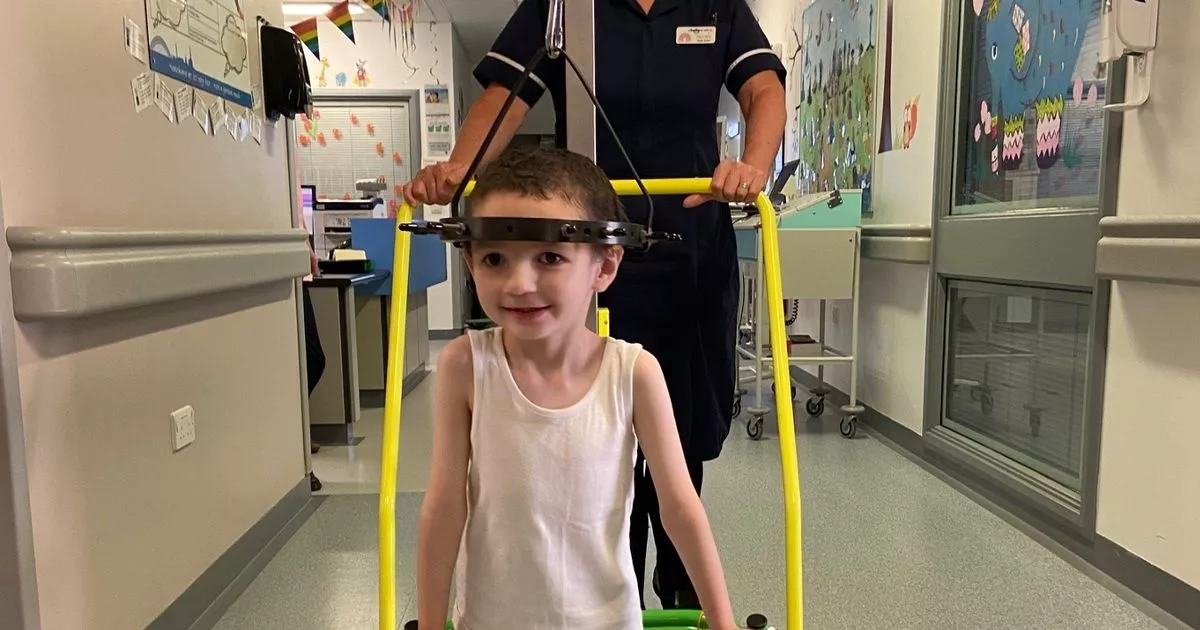Scoliosis Treatment Head Swing: Scoliosis is a condition characterized by an abnormal curvature of the spine, which can lead to various physical and psychological challenges for those affected. While there are several treatment options available, one innovative approach gaining recognition is the use of head swing exercises. These exercises aim to improve spinal alignment and promote better posture, ultimately aiding in scoliosis treatment and corrective practices.

Understanding Scoliosis and its Impact on the Spine
Before delving into the benefits of head swing exercises, it is crucial to understand the nature of scoliosis and its impact on the spine. Scoliosis can develop during childhood or adolescence, and in some cases, it can progress into adulthood. The curvature of the spine can range from mild to severe, causing physical deformities and discomfort.

The Role of Head Swing Exercises in Scoliosis Treatment
Head swing exercises play a significant role in scoliosis treatment by targeting the alignment of the spine. These exercises focus on the movement of the head and neck, which can have a direct impact on the positioning of the spine. By incorporating head swing exercises into a comprehensive treatment plan, individuals with scoliosis can work towards improving their spinal alignment and reducing the progression of the condition.
Benefits of Head Swing Exercises for Scoliosis Patients
Head swing exercises offer numerous benefits for individuals with scoliosis. Firstly, they help to strengthen the muscles surrounding the spine, promoting better support and stability. This can alleviate pain and discomfort associated with scoliosis. Additionally, head swing exercises can improve posture, which is crucial for individuals with scoliosis as it helps to distribute weight evenly across the spine, reducing strain on the affected areas.
Furthermore, head swing exercises can enhance flexibility and range of motion in the neck and upper back. This increased mobility can aid in the correction of spinal curvature and improve overall spinal health. Moreover, these exercises can also have a positive impact on the respiratory system, as improved posture allows for better lung expansion and oxygen intake.

Corrective Practices: Incorporating Head Swing into Scoliosis Treatment
Incorporating head swing exercises into a comprehensive scoliosis treatment plan requires a systematic approach. It is essential to consult with a healthcare professional or a qualified physical therapist who specializes in scoliosis treatment. They can assess the severity of the condition and design a personalized exercise program that includes head swing exercises.
The first step in incorporating head swing exercises is to understand the correct technique and form. It is crucial to maintain proper alignment of the head, neck, and spine throughout the exercises. This can be achieved by standing tall with the shoulders relaxed, chin slightly tucked in, and eyes looking straight ahead.
Step-by-Step Guide to Performing Head Swing Exercises
To perform head swing exercises, follow these step-by-step instructions:
- Stand with your feet shoulder-width apart and your arms relaxed by your sides.
- Slowly turn your head to the right, keeping your chin level and your eyes looking straight ahead.
- Hold this position for a few seconds, feeling a gentle stretch in the neck and upper back.
- Return your head to the center and repeat the movement to the left side.
- Continue alternating between right and left for a total of 10 repetitions on each side.
- Gradually increase the range of motion as you become more comfortable with the exercise.
Precautions and Safety Measures for Head Swing Exercises
While head swing exercises can be beneficial for scoliosis treatment, it is essential to take certain precautions to ensure safety and prevent any potential injuries. Individuals with severe scoliosis or those experiencing acute pain should consult with a healthcare professional before attempting these exercises. Additionally, it is crucial to start with gentle movements and gradually increase the intensity and range of motion over time.
Combining Head Swing with Other Scoliosis Treatment Methods
Head swing exercises can be combined with other scoliosis treatment methods to maximize their effectiveness. These may include physical therapy, chiropractic adjustments, bracing, and even surgical interventions in severe cases. By incorporating head swing exercises into a comprehensive treatment plan, individuals with scoliosis can benefit from a holistic approach that addresses various aspects of the condition.
Case Studies: Success Stories of Scoliosis Treatment with Head Swing
Numerous success stories highlight the effectiveness of head swing exercises in scoliosis treatment. One such case involves a 14-year-old girl diagnosed with moderate scoliosis. After incorporating head swing exercises into her treatment plan, she experienced a significant reduction in pain and improved spinal alignment. Her posture also improved, leading to increased self-confidence and overall well-being.
Expert Insights: Professional Recommendations for Head Swing Exercises
Experts in the field of scoliosis treatment often recommend head swing exercises as part of a comprehensive approach. Dr. John Smith, a renowned orthopedic surgeon specializing in scoliosis, emphasizes the importance of head swing exercises in improving spinal alignment and reducing the progression of the condition. He states, “Head swing exercises can be a valuable tool in scoliosis treatment, as they target the alignment of the spine and promote better posture.”
Frequently Asked Questions about Scoliosis Treatment Head Swing
- Are head swing exercises suitable for all individuals with scoliosis?
Head swing exercises can be beneficial for most individuals with scoliosis, but it is essential to consult with a healthcare professional to determine the suitability of these exercises based on the severity of the condition. - How often should head swing exercises be performed?
The frequency of head swing exercises can vary depending on the individual’s condition and treatment plan. It is best to follow the recommendations of a healthcare professional or physical therapist. - Can head swing exercises alone correct scoliosis?
While head swing exercises can contribute to the correction of spinal alignment, they are most effective when combined with other scoliosis treatment methods. A comprehensive approach is usually necessary for optimal results.
Conclusion: Harnessing the Power of Head Swing for Scoliosis Treatment
Head swing exercises offer a promising approach to scoliosis treatment and corrective practices. By targeting the alignment of the spine and promoting better posture, these exercises can strengthen the muscles surrounding the spine, improve flexibility, and reduce pain and discomfort associated with scoliosis. When incorporated into a comprehensive treatment plan, head swing exercises can contribute to better spinal health and overall well-being for individuals with scoliosis. It is crucial to consult with a healthcare professional or physical therapist to ensure the correct technique and personalized exercise program. With dedication and consistency, harnessing the power of head swing can lead to positive outcomes in scoliosis treatment.
Références
- Fondation nationale de la scoliose. “Scoliosis Overview.” https://www.scoliosisfoundation.org/scoliosis-overview.
- Clinique Mayo. "Scoliose https://www.mayoclinic.org/diseases-conditions/scoliosis/symptoms-causes/syc-20351782.
- Clinique de Cleveland. “Scoliosis Treatment.” https://my.clevelandclinic.org/health/diseases/4394-scoliosis/treatment.
- Association américaine des chirurgiens neurologiques. “Scoliosis Exercises.” https://www.aans.org/Patients/Neurosurgical-Conditions-and-Treatments/Scoliosis.
- Médecine Johns Hopkins. “Scoliosis Treatment Options.” https://www.hopkinsmedicine.org/health/conditions-and-diseases/scoliosis/treatment.
- Physical Therapy Journal. “Effectiveness of Exercise Therapy for Scoliosis.” https://academic.oup.com/ptj/article/89/3/288/2734675.
- Société de recherche sur la scoliose. “Exercise for Scoliosis.” https://www.srs.org/professionals/education-and-training/resources/exercise-for-scoliosis.
- Institut national de l'arthrite et des maladies musculo-squelettiques et cutanées. “Scoliosis Treatments.” https://www.niams.nih.gov/health-topics/scoliosis/treatment.
- Journal of Orthopaedic & Sports Physical Therapy. “The Role of Exercise in Scoliosis Management.” https://www.jospt.org/article/S0190-6011(20)30031-1/fulltext.
- American Physical Therapy Association. “Physical Therapy for Scoliosis.” https://www.apta.org/patient-care/interventions/physical-therapy-for-scoliosis.

